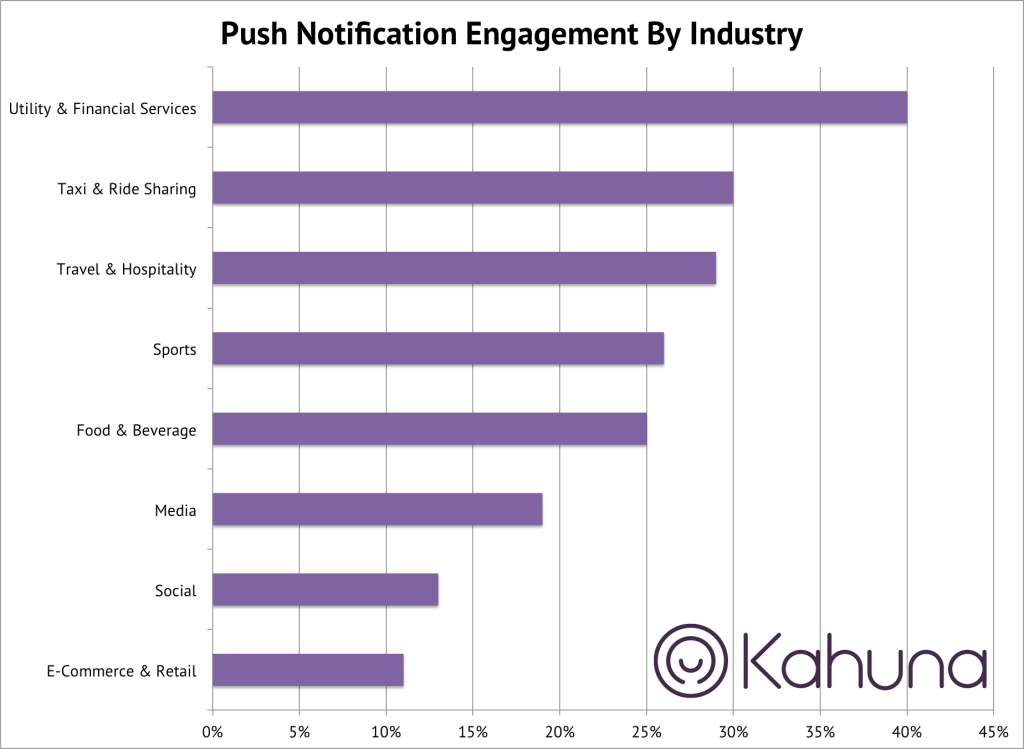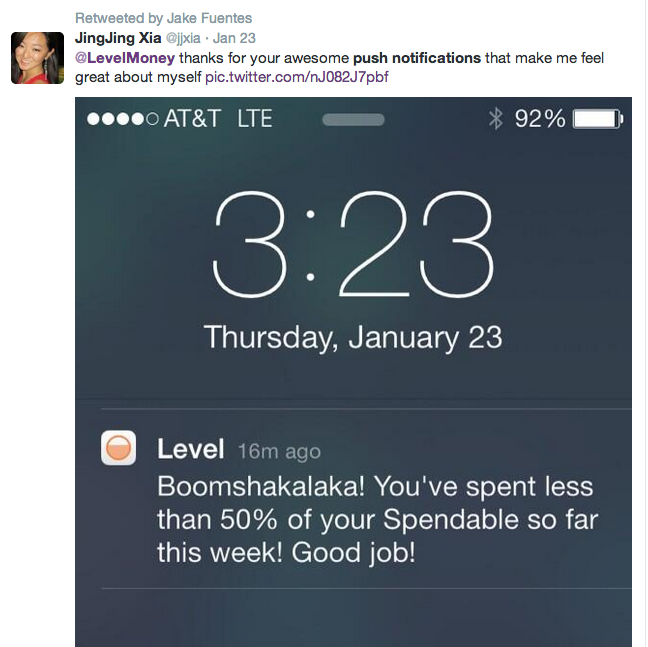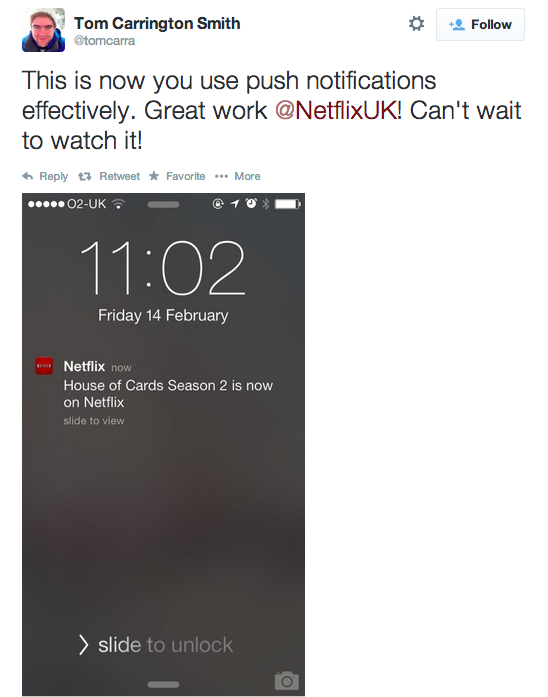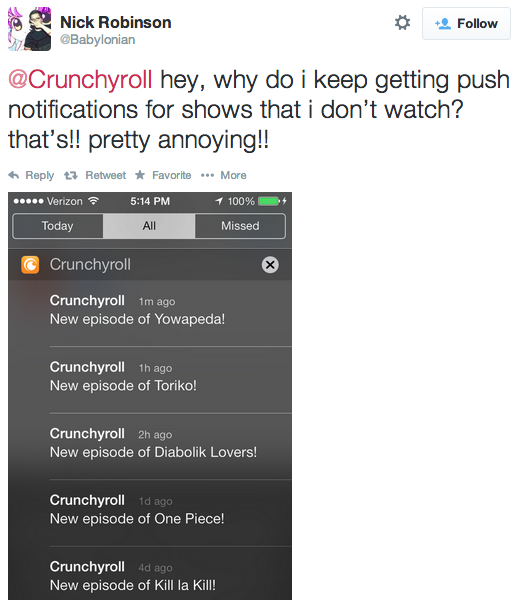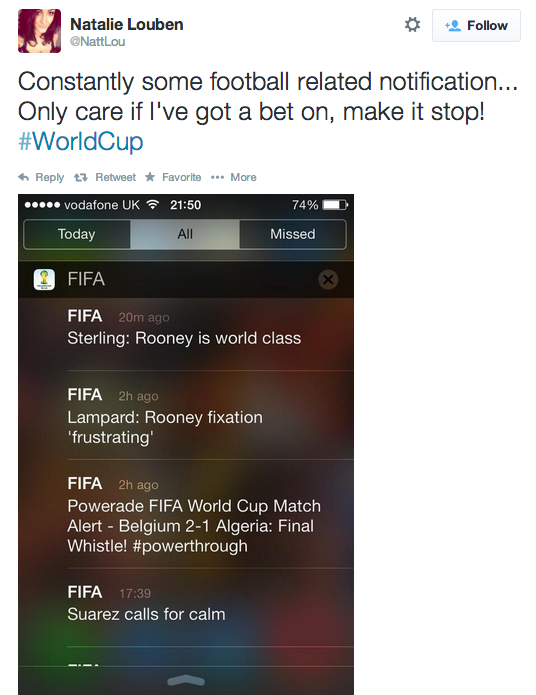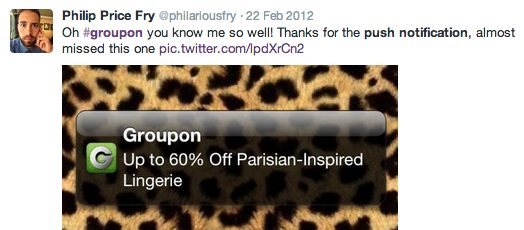New data on push notifications show up to 40% CTRs, the best perform 4X better than the worst (Guest post)
[Andrew: A few weeks ago, the folks at Kahuna released some great data showing that up to 60% of users opt-out of push notifications. Now they’re releasing some new data on the click-through rates of push notifications, showing the differences between app categories and breaking down the reasons why some apps are so much stronger than others. They were gracious enough to share this data for the first time, as a guest post on here – you can get in touch with the author, Alli Brian or Adam Marchick, Kahuna’s CEO.]
Push notification click-through rates via Alli Brian @ Kahuna
The best apps know how to use push notifications to their advantage. They’ve figure out how to make their service part of their users’ daily routine, and they leverage push as a vehicle to do this.
Recent data from Kahuna reveals that push engagement rates vary widely across industries – utility and financial services apps seeing the highest performance, and retail and social experiencing the worst. Here’s a comprehensive look at the state of push engagement rates, as well as a roadmap for getting back on track if your app is trailing behind.
Here’s the data:
You can see that push engagement rates for utility and financial services notifications (40%) are nearly four times higher than for e-commerce & retail notifications (12%). While all industry notifications benefit from significantly higher engagement rate than they see from traditional email engagement, the wide discrepancy can result in significant revenue loss for underperforming apps.
Get new updates, usually once a week – featuring long-form essays with what’s going on in tech.
Apps That Are Winning
High push notification engagement rates are most often seen by apps with high frequency users. These apps use notifications to nudge their users do something that has become part of their regular routines. Utility, Financial Services and Ride Sharing apps lead the way – think about how normal it is to make these apps part of your daily or weekly routine. Looking for directions, watching your budget and taking a taxi are very regular activities, and using push to incentivize these actions is extremely effective. Here are a few examples:
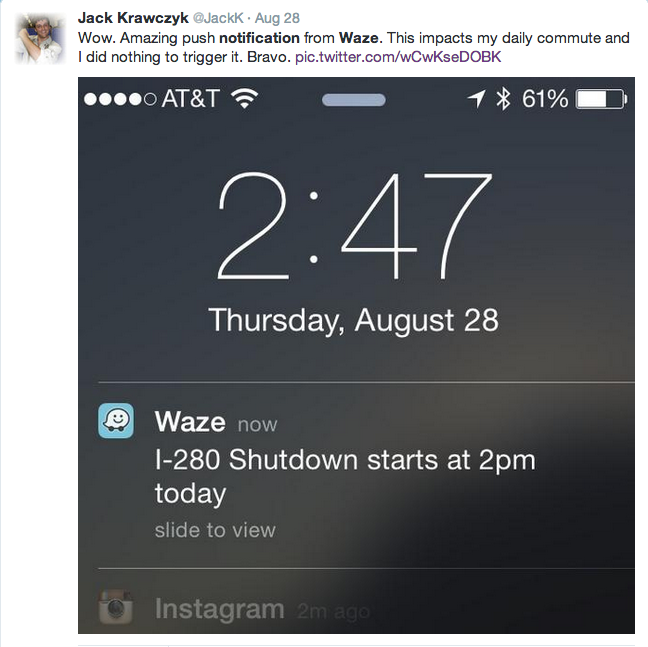
Utility apps have an obvious job to do – know your users daily routines and help them out when they appear to be getting into trouble. That’s what this push notification from Waze did – it was sent to Waze users folks who regularly take the 280 freeway from San Francisco to Silicon Valley. And Waze users appreciated the heads up. Other high performing notifications from utility apps like job search or apartment rental services include new job listings or apartment availability alerts.
User engagement with these notifications (when appropriately timed) can be off the charts – as high as 80%.
Financial services apps also experience strong push engagement. By nature of the industry, money management is an important part of our daily lives. Hold the purse strings (or send a notification about them) and your users will be quick to respond. Take a look at this notification from Level Money. Their push engagement is off the chart.
But What If You’re Having A Harder Time Of It?
If you are in an industry that suffers from low push engagement rates, how do you overcome this? Retail, social and media apps typically have a more difficult time creating push notifications in a way that provides real user value. The good news: research shows that you can influence push engagement rates by using strategies that motivate users to integrate your app into their regular routines. Here are the top three techniques that will improve your notification response rates.
1. Find your Cadence:
Notification tolerance varies across app industries and individual users, so make the most of your notifications. Not all apps should be sending push notifications once a day, and engaged users have a vastly different tolerance for notifications than do new users or dormant users. Rather, it’s about sending the right message to the right person at the right time. In many cases, the elegance is in knowing when not to send a message. Check out the example below.
Netflix does a great job of personalizing their notifications to the individual receiving them. Every user receives a unique message about the specific show they have been watching. Rather than sending every user a notification every time a new episode of any show is released, consider one perfectly personalized notification. Crunchyroll could take a page out of their book.
Note: Sophisticated automation that limits and prioritizes the number of pushes each user is eligible to receive is the best way to achieve the appropriate cadence, given the numerous corner cases.
2. Make it personal
Don’t assume every user wants to hear about the same thing. Sending a notification that is valuable to the user isn’t just about a 10% coupon – it’s about presenting a relevant offer. The most compelling offer is one that contains information that the user deems important. Check out reactions to the notifications below.
These notifications both came from sports apps but elicited very different user responses. The FIFA notification about the world cup was perceived as spam – simply because the app users to which it was sent was uninterested in the particular game mentioned in the message. In contract, the notification from SportsCenter that referenced the user’s specific fantasy football league was perceived as delightful content.
Worst of all is the mis-personalized push notification. We can’t emphasize enough how critical it is to gather accurate, person-level data to inform your notification. Use a unique identifier so even anonymous users will get accurately personalized notifications. Check out what happens if you send notifications to “devices”, not people.
As you can see above, device-based tracking does more harm than good. For example, if your wife borrows your phone and does a bit of browsing, all of a sudden you’ll be receiving notifications about irrelevant flash sales.
3. Timing is everything
Great timing should consider both user behavior and urgency. Notifications that include urgent information need to be sent at a time that is relevant to the context of the message, such as the notifications below.
As you can see, the notifications sent by Refresh and United Airlines both reference urgent and important information, and are tailored to the specific person receiving the message. As such, the response to the notifications are very positive.
For notifications that are not critically urgent, the goal is to minimize disruption and maximize delight. The horror stories about waking up to a mis-timed push notification abound, and users are not forgiving (see below).
Considering every user keeps a different schedule, the only solution is to send push notifications at the time when each user is most likely to engage with your app. Kahuna data reveals that customizing delivery time based on user preference results in an average conversion uplift of 384%.
Great push is all about inspiring delight – facilitating a relevant and valuable app experience for your users and securing a prized place in their daily routines. Whether you’re in a high-performing industry like Utility or Financial Services or a low-performing one like Retail or Social, there is always room for improvement. Focus on understanding what your users value about your service and tailor your messages to their unique needs and interests. You’ll see push engagement skyrocket, and your users transform into rabid advocates.
PS. Get new updates/analysis on tech and startupsI write a high-quality, weekly newsletter covering what's happening in Silicon Valley, focused on startups, marketing, and mobile.
Views expressed in “content” (including posts, podcasts, videos) linked on this website or posted in social media and other platforms (collectively, “content distribution outlets”) are my own and are not the views of AH Capital Management, L.L.C. (“a16z”) or its respective affiliates. AH Capital Management is an investment adviser registered with the Securities and Exchange Commission. Registration as an investment adviser does not imply any special skill or training. The posts are not directed to any investors or potential investors, and do not constitute an offer to sell -- or a solicitation of an offer to buy -- any securities, and may not be used or relied upon in evaluating the merits of any investment.
The content should not be construed as or relied upon in any manner as investment, legal, tax, or other advice. You should consult your own advisers as to legal, business, tax, and other related matters concerning any investment. Any projections, estimates, forecasts, targets, prospects and/or opinions expressed in these materials are subject to change without notice and may differ or be contrary to opinions expressed by others. Any charts provided here are for informational purposes only, and should not be relied upon when making any investment decision. Certain information contained in here has been obtained from third-party sources. While taken from sources believed to be reliable, I have not independently verified such information and makes no representations about the enduring accuracy of the information or its appropriateness for a given situation. The content speaks only as of the date indicated.
Under no circumstances should any posts or other information provided on this website -- or on associated content distribution outlets -- be construed as an offer soliciting the purchase or sale of any security or interest in any pooled investment vehicle sponsored, discussed, or mentioned by a16z personnel. Nor should it be construed as an offer to provide investment advisory services; an offer to invest in an a16z-managed pooled investment vehicle will be made separately and only by means of the confidential offering documents of the specific pooled investment vehicles -- which should be read in their entirety, and only to those who, among other requirements, meet certain qualifications under federal securities laws. Such investors, defined as accredited investors and qualified purchasers, are generally deemed capable of evaluating the merits and risks of prospective investments and financial matters. There can be no assurances that a16z’s investment objectives will be achieved or investment strategies will be successful. Any investment in a vehicle managed by a16z involves a high degree of risk including the risk that the entire amount invested is lost. Any investments or portfolio companies mentioned, referred to, or described are not representative of all investments in vehicles managed by a16z and there can be no assurance that the investments will be profitable or that other investments made in the future will have similar characteristics or results. A list of investments made by funds managed by a16z is available at https://a16z.com/investments/. Excluded from this list are investments for which the issuer has not provided permission for a16z to disclose publicly as well as unannounced investments in publicly traded digital assets. Past results of Andreessen Horowitz’s investments, pooled investment vehicles, or investment strategies are not necessarily indicative of future results. Please see https://a16z.com/disclosures for additional important information.
